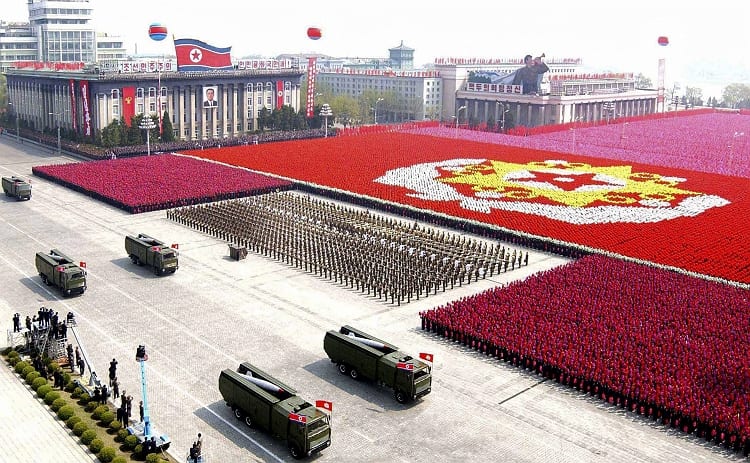
By Ashley Etchells-Butler
A fundamental problem I have with any religious organisation is that it not only asks for complete obedience throughout this life, but for eternity after you die. If you are good, you go to a nice place. But if you are bad you are likely to suffer unimaginable torture – forever
But at least this manner of spiritual exploitation is essentially speculative on the part of the parties involved. The blood-cult of North Korea employs a rather more tangible form of forced obedience in the ‘afterlife’.
“At least when you die you can leave North Korea” says John Sweeney in North Korea Undercover. But while the Democratic People’s Republic of Korea (DPRK) is an atheist regime, it is still officially led by Kim Il Sung; a man long dead. “So it’s a necrocracy, or a mauselocracy or a thanatocracy”, as Hitchens wryly put it, wherein the founder still guides his people from beyond the grave.
If Kim Il Sung and his son Kim Jong Il do in fact live on, where do they live? What afterlife do they enjoy? Are they waited upon by the millions that died of malnutrition during the 1990’s? Are the gulags in the mountains simply preparation for the ‘life to come’?
Using the same blood logic that justifies the worship of dead tyrants, a North Korean knows that if they sin against the regime in any way, not only will they spend the remainder of their short life enduring terrible suffering ‘in the mountains’, their children, and their children’s children will likely suffer the same fate.
This is what you get in a living religion.
A moving example can be found in the story of Shin Dong-hyuk, possibly the only known person to have been born in a North Korean gulag and escaped.
Shin Dong-hyuk was born as a result of a ‘reward marriage system’ for exemplary inmates, doomed to live a life as a criminal by birth. This man was hung, burnt over fires, had a finger cut off, starved, beaten and was so brainwashed by his captors that he even informed on his own parents. They were subsequently executed.
It seems that to the North Korean authorities, what you do after you die is up to you. But what you do during your own life will have very real implications for generations of your family to come. It is the closest imagining of a ‘hell on earth’ by a totalist regime that I have come across. What is worse – you can be born into it.
In this way, the ‘afterlife’ in North Korea refers not to your own experience of life after death, but to what happens after your life. Being an atheist state, the DPRK seeks not to punish those who have died – what would be the point in that? Instead it punishes the living for the sins of the dead.
One has to wonder, when the regime does finally topple, will the newly emancipated people of North Korea apply this same logic to the family of their disgraced leaders? It would be wrong, but I might understand.
Postscript – Shooting the Dead
There is one instance that I have come across where the regime does ‘punish the dead’ as an example for the living.
‘NK Exhumes and Decapitates Body of “Traitor”’ (Choson Ilbo, 5 October 2002), describes a moment in 1998 at the height of the famine. Sweeney writes:
‘One September day in Unification Square a crowd of thousands saw a score of officials shot, including the minister for agriculture, So Kwan Hi. They went one better, and dug up his predecessor, long dead, and shot the corpse of Kim Man Kum, too. In the Zombie state, you can’t be too careful about the dead.’
At the point that this incident happened, North Korea was going through a horrific famine. It is estimated that between 300 000 and 3.5million North Koreans died of starvation and malnutrition during the 1990s. When food aid did eventually arrive, little is known of where it went. One supposes that the regime looked after itself rather comfortably. But the generosity spread little further than Pyongyang. Cannibalism is said to have been rife.
In times of increased hardship and suffering, dissent becomes more difficult to manage. God forbid that people blame the regime proper – hence the decidedly choreographed executions, in front of ‘a crowd of thousands’. And the pièce de résistance? The corpse of the deceased former minister for agriculture is dragged out, and also shot.
For the ‘I love Big Brother’ fiercely loyal North Korean, it might be a representation of absolute justice. For the rest of us, it suggests that the regime is weak, bordering on lunacy.
Just as Xerxes had his soldiers whip the sea for failing to obey him, King Kim shoots the dead for failing to prevent a famine.
Not even your corpse is safe from the propaganda machine of the DPRK.